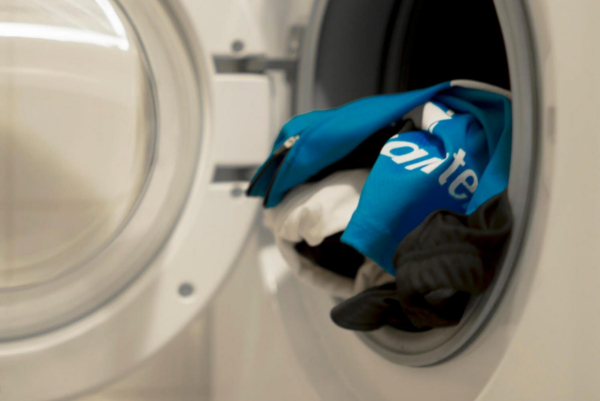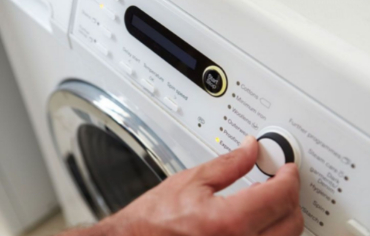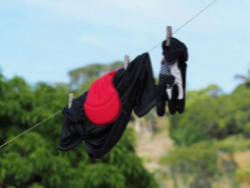For all cyclists who are willing to take proper care of their cycling products, it’s very important to know how to clean bike shorts. Cycling clothing is a sophisticated combination of cutting-edge technology, purposefully designed to improve comfort and performance, as anybody who regularly rides a bike will confirm. As a dedicated athlete, you’ve spent time and money selecting the best riding apparel. In this article, you’ll know how to wash tights in the washer as well as other cycling clothes.

However, at the end of your journey, you notice that your high-tech gear has to be washed. To know how to wash cycling shorts keep reading:
Recommended Cleaning Agent
Your cycling gear is made of high-performance technical fabrics that, like any sportswear, remove perspiration from the body to keep you comfortable while you exceed your limits. Because of this, you should not simply toss your riding gear in with the rest of your clothes. Synthetic fabrics used in high-end cycling clothing feature microscopic holes that help the fabric to breathe; however, using the wrong washing detergents and fabric softeners may clog these pores, reducing the efficacy of your kit’s moisture-wicking technology. For every quick impatient cyclists, we would suggest you get quick dry bike shorts. As a result, we strongly advise using a mild detergent and some OxiClean for those strong odors. You can also try googling best detergent for cycling clothes. To ensure clean clothes, you will need the following four items:
- Zippered mesh bag
- Dye-trapping sheet
- Mild Detergent
- OxiClean and OxiClean Odor Blaster
Set Up the Clothes for Washing
Before you even take your gear to the laundry, you can do a few things to keep it in good shape and successfully serve your trip. One of the primary elements contributing to the wear and tear of cycling equipment is an abrasion in the wash. Turning your items inside out protects the complex design on the fabric. When you cycle, the zipper teeth, Velcro, and other similar features of your cycling gear can grab and abrade your skin, straining and stretching the material.
This risk is mitigated by turning the items inside out so that the harmful components are on the inside. Make sure all zippers are buttoned, and any snaps or Velcro are closed before turning the entire garment inside out and dumping it in. If you rinse your gear before placing it in the laundry, it will stay clean and usable. Cycling clothing will get permanently discolored if it is washed while still covered in dirt and filth after a ride.
Don’t forget to check any pockets or pouches in your cycling shorts before washing. Running food, gels, or other forgotten items through your pockets while washing your equipment might be devastating. A brief rinse with water or the application of a popular laundry stain remover before placing your load into the washing machine might be the difference between nasty stains and clean, tour-ready garments.
The majority of cycling equipment stickers will provide specific cleaning instructions. Check the labels to see if there are any brand-specific recommendations before washing your riding gear.
Configuring The Washing Machine
If you’re not sure what setting to use for your washing machine, cold water is usually a good bet. Cold water can be beneficial in removing organic stains such as soil or grass if the proper detergent and preparation are used.

Because it is meant for delicate laundry, such as lace and silk, it is best to use the colder setting on your washing machine for your synthetic fabric garments. Because cold water in the washing machine is also wonderful for dark, colorful clothes, your favorite cycling shirts and shorts will look beautiful in cold water. Cold water and low spin cycles are the safest settings to use when washing bike shorts and other athletic clothing made of similar textiles.
Your riding gear’s material is highly vulnerable to damage from hot water. Materials created with sweat-wicking technology face the danger of having their fibers melt in a hot water wash, preventing them from serving the purpose for which they were created.
Quantity of Cleaning Agent
Contrary to common opinion, liquid washing detergent is quite effective. Because liquid detergent is so concentrated, you don’t need much to clean your cycling gear completely. Even the suggested doses indicated on the tops of most American laundry detergent cartons are too high for your machine.
Cleaning your equipment requires only a few drops of concentrated liquid laundry soap. However, it’s critical to ensure that you’re just using laundry detergent in your load of cycling clothes, even if it’s a small amount.
Snub the Usage of Bleach and Any Knit Softener
Do not use fabric softeners when washing your biking equipment. Fabric softeners may degrade stretch components and dramatically reduce the longevity of your gear, as well as make a noticeable difference in how the material feels against the skin. Never, ever put bleach on your cycling equipment, even to re-whiten it. All bleach, including non-chlorinated bleach, is extremely harmful to the composition of performance materials.
Specialized Care
Windbreakers, raincoats, and other weather-specific gear items are available for bicycles. These are constructed of materials that utilize specialized technology and are hence suitable for taking you through any situation. To keep this clothing working, you must repay the special care they give.
When these particular items are not cleaned in a machine, they operate better. A gentle hand wash is perfect for preserving the garment’s functionality. Water-resistant clothing may be made to last longer by spraying it with a water-resistant spray after washing and air drying.
Another specialty component that requires special attention during washing is the spongy crotch pad found in most bicycle shorts. This is made of chamois, an extremely comfortable material protective of your most sensitive areas when riding. The absorbent chamois in this section of your bike clothes can help prevent bacteria growth by being hand cleaned and promptly air dried. So you must know how to wash chamois very well.
Drying Your Cycling Outfit
Cycling experts have conflicting opinions on whether it is good to dry riding gear in a dryer. According to several cycling experts, most cycling equipment may be dried in a regular tumble dryer if the dryer is set to a lower, cooler temperature.
If you use a tumble dryer on your bike shorts or other specialized material riding clothing, the heat from the machine may melt the fibers. The dryer is just as susceptible to heat damage as the washing machine. If you want to tumble dry your clothes, use a lower heat setting on your machine.

However, most cycling enthusiasts and professionals believe that air drying your riding clothing is safer. Air drying clothing on a clothesline or drying rack is a simple approach to ensure that mildew or germs do not form in a moist pile.
Allowing the cloth to dry in the sun rather than the more extreme heat of a tumble dryer protects your gear from anything it wouldn’t encounter on the bike route. Allowing nature to dry your bike gear ensures that the material is cared for by the same elements that it was built to resist.
Closing Down
Knowing your equipment is the best way to take exceptional care of your bike shorts and other riding apparel. In addition to using less detergent than usual, avoid using fabric softeners and bleach of any kind.
Best practices include turning garments inside out, zipping up, and securing all buttons, zippers, or Velcro. If you choose to wash your clothes in the washing machine, rinse them completely first and be careful with them.
Wash with extra water and on the cold setting. Air-dry your bike shorts or use a tumble dryer on the lowest, coldest setting. If you maintain your equipment and know what it demands, you will be able to bike for many more years and miles.
Does The Outfit Need to be Washed After Every Ride?
Not every piece of clothing must be washed after each ride. Layering clothing and accessories may be suitable for several excursions, especially in favorable weather. After each ride, all next-to-skin apparel, such as bib shorts, base layers, socks, and so on, must be washed.
Hand vs. Machining Washing
Since now you know the basics of how to wash cycling shorts, let’s see an interesting comparison. Cycling experts continue to debate the benefits of hand cleaning your gear as compared to machine washing it. Each strategy has benefits and drawbacks.
If you opt to hand wash your cycling clothes, use tepid water and less detergent than you would for a regular laundry load.
Some riders believe that hand washing their bike gear in the sink with a small quantity of shampoo works better than machine washing.
Several riders, however, ensure that conventional laundry detergents such as Tide work just as well on cycling gear. Your cycling equipment should be safe to use as long as the detergent does not contain fabric softener or chlorine.
Keep in mind, however, that the amount of soap and water required for cycling equipment is less than what most people use for laundry. You can use any of the techniques that we presented to you about how to wash bike shorts.
Precautions
- Always keep your riding gear separate from the rest of your laundry. This is especially important after the first wash since some of the sublimated colors may come out, and you don’t want to ruin your other garments. A color-trapping sheet, such as Shout Color Catchers, facilitates in the removal of excess dye from garments.
- Some cycling shorts and accessory manufacturers include specific care instructions for their goods. Always examine the labels on your riding gear before selecting how to wash it. It doesn’t have to be a chore to maintain your bike gear immaculate. Follow these simple steps, and you’ll be able to ride your bike every day with brand-new, pristine gear.
Hopefully, now you know how to wash cycling shorts.
From getting knowledge about bikes and bike-related accessories, you can contact us without taking any hassle. We are always open for you to make your buying decision more perfect. Thank You!
